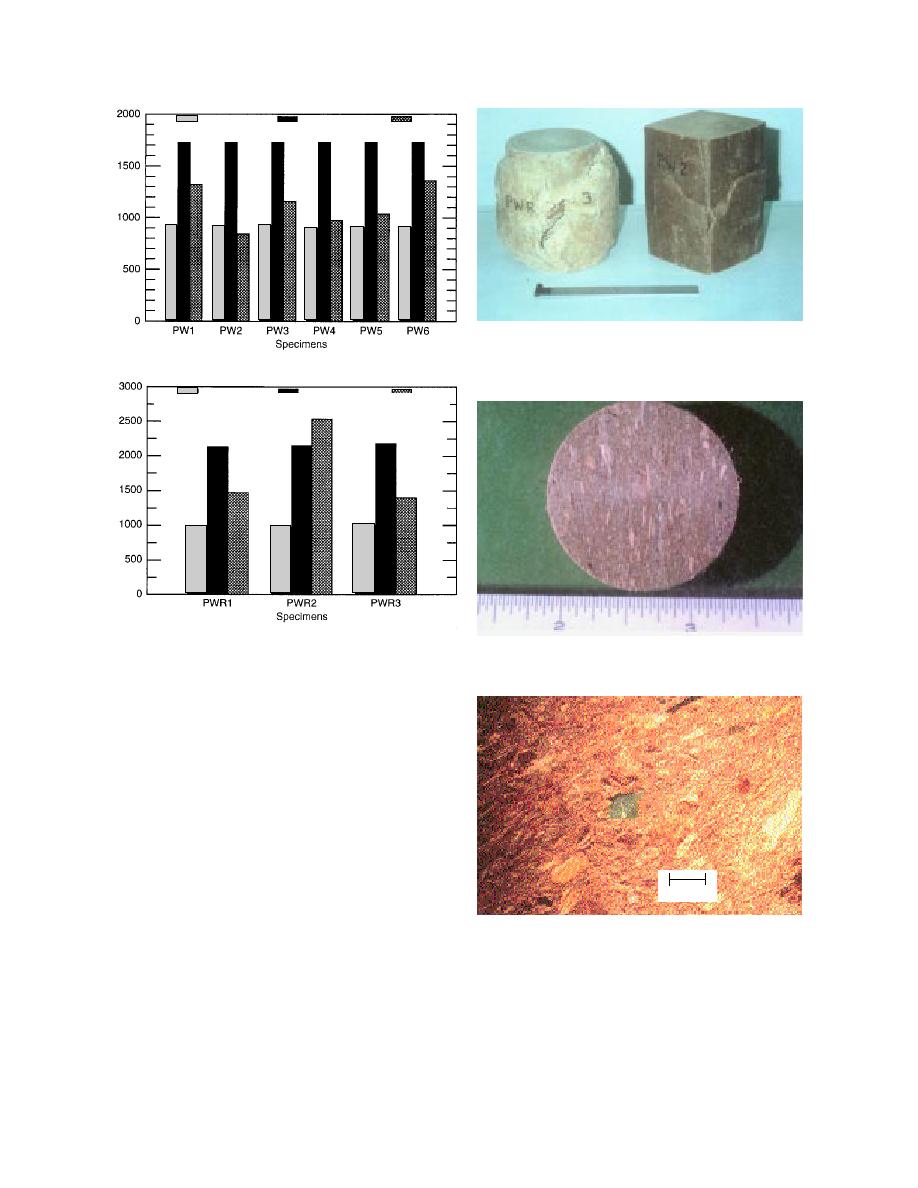
Density (g/cm3) Compressive Strength (psi) Failure Microstrain
Figure 39. Some initial RPC specimens tested for
compression (note the inclusion of wood chip in the
a. Square bars.
second specimen).
Density (g/cm3) Compressive Strength (psi) Failure Microstrain
b. Round bars.
Figure 40. Section of the improved RPC specimens
Figure 38. Compression test results of the initial RPC
free of any wood chip inclusions.
specimens.
in some specimens. These longitudinal wood
chips were oriented primarily in the direction of
loading. Besides causing local stress concentra-
tion and the nucleation of cracks, these chips
influenced the deformation characteristics signifi-
cantly. To obtain consistent data in the tests, it
was essential that the test material be homo-
geneous. Thus, the manufacturer was urged to
improve the consistency and granularity of the
material. As a result, the manufacturer developed
technology to process the sawdust to a finer mesh
1.0 mm
size [less than 1.3 mm (0.05 in.)] and virtually
eliminated contamination with any large wood
Figure 41. Micrograph of the inclusion of unmelted
pieces. This made the size distribution of the saw-
HDPE in the improved RPC material.
dust more consistent with that of the ground plas-
tics. The resultant material proved to have cross
It was apparent that to use this RPC for guard-
sections with more uniform grain distribution
rail posts and blockouts, finished beams of this
material in larger cross section, 152 203 mm (6
(Fig. 40), although inclusions of small specks
8 in.), were required. At our request the manu-
(about 1 mm) of unmelted high-density polyeth-
ylene (HDPE) (Fig. 41) were occasionally evident
facturer produced these larger sized beams, from
in the micrographs of the matrix.
which specimens were prepared for testing.
28



 Previous Page
Previous Page
